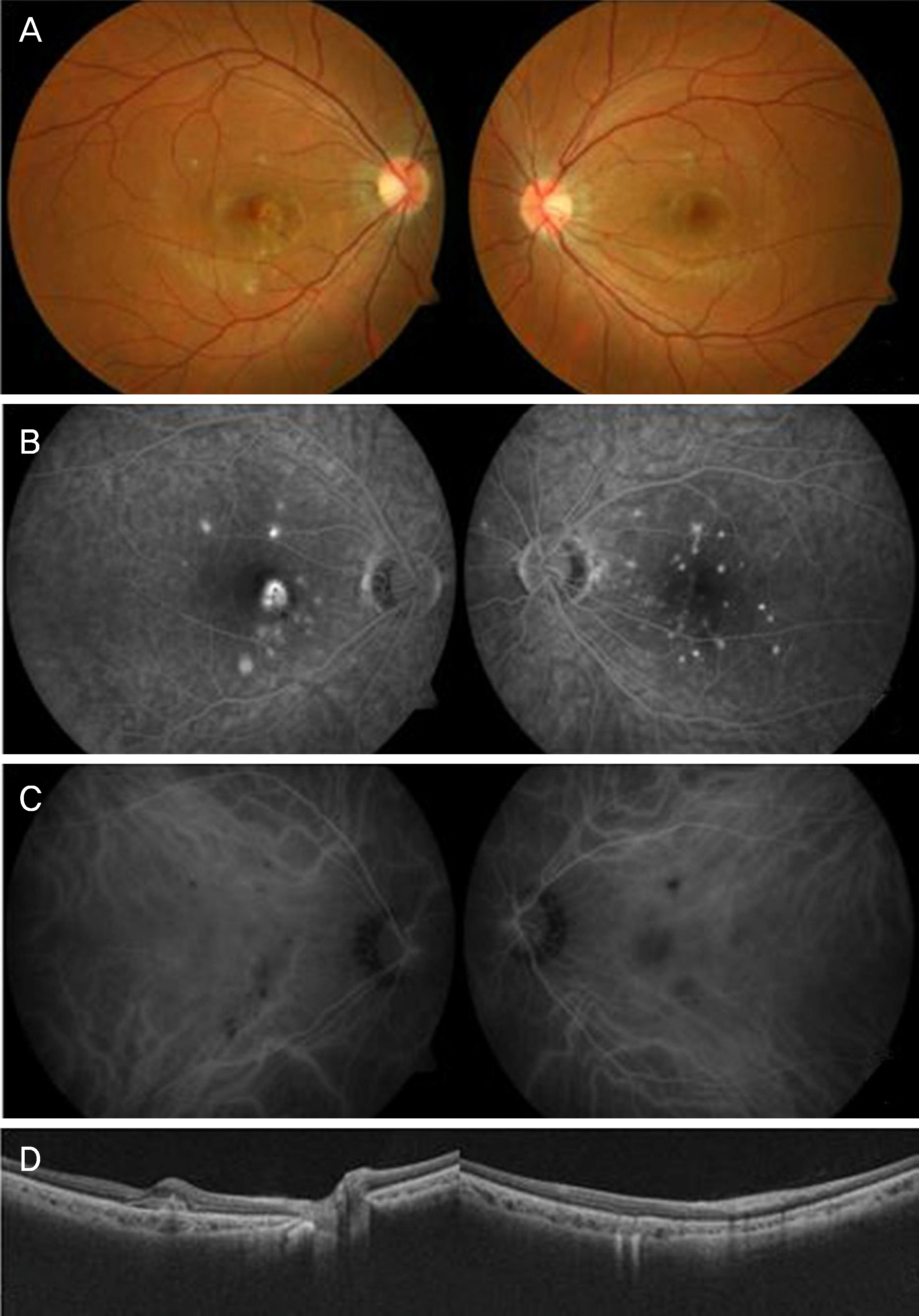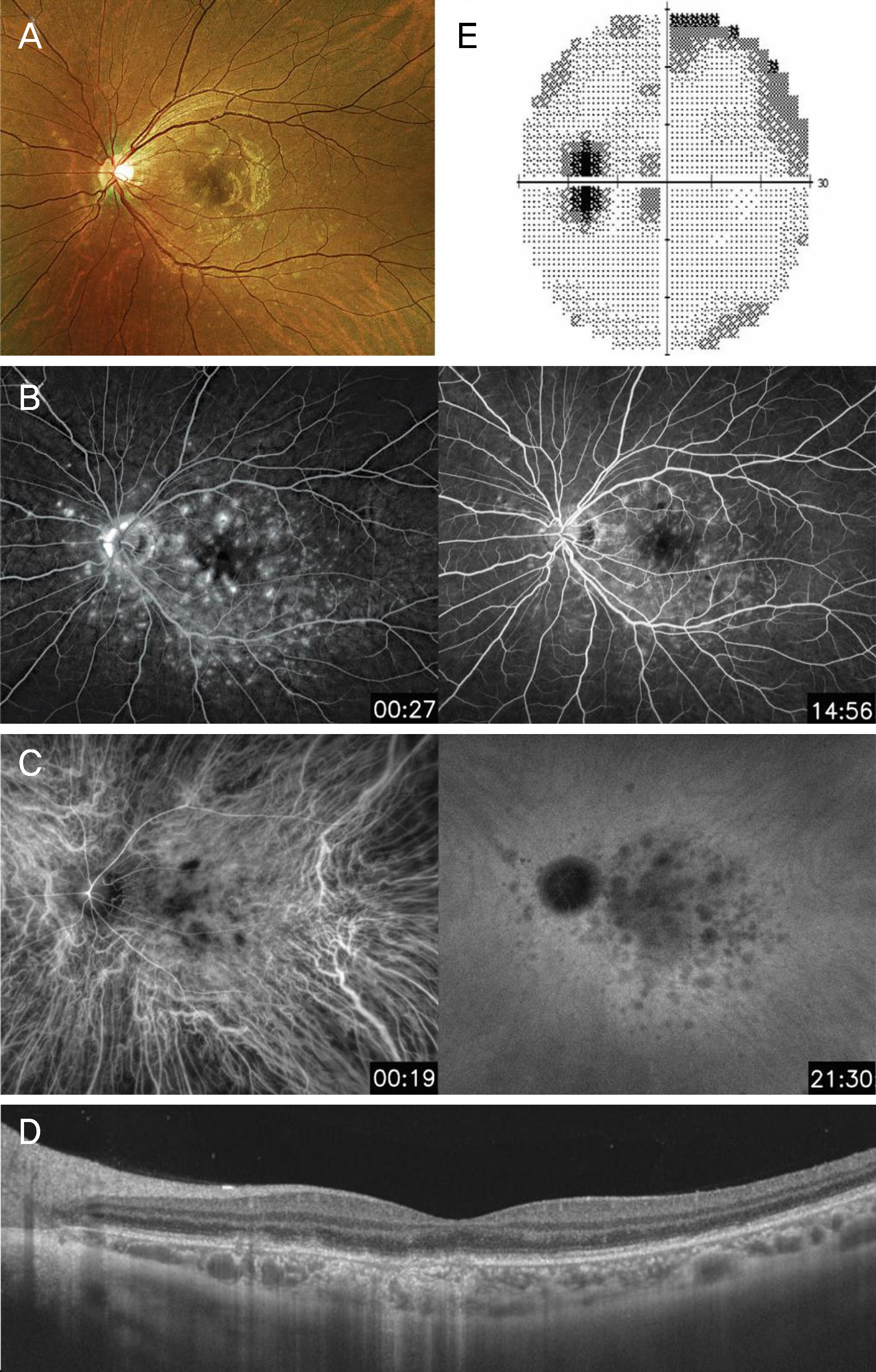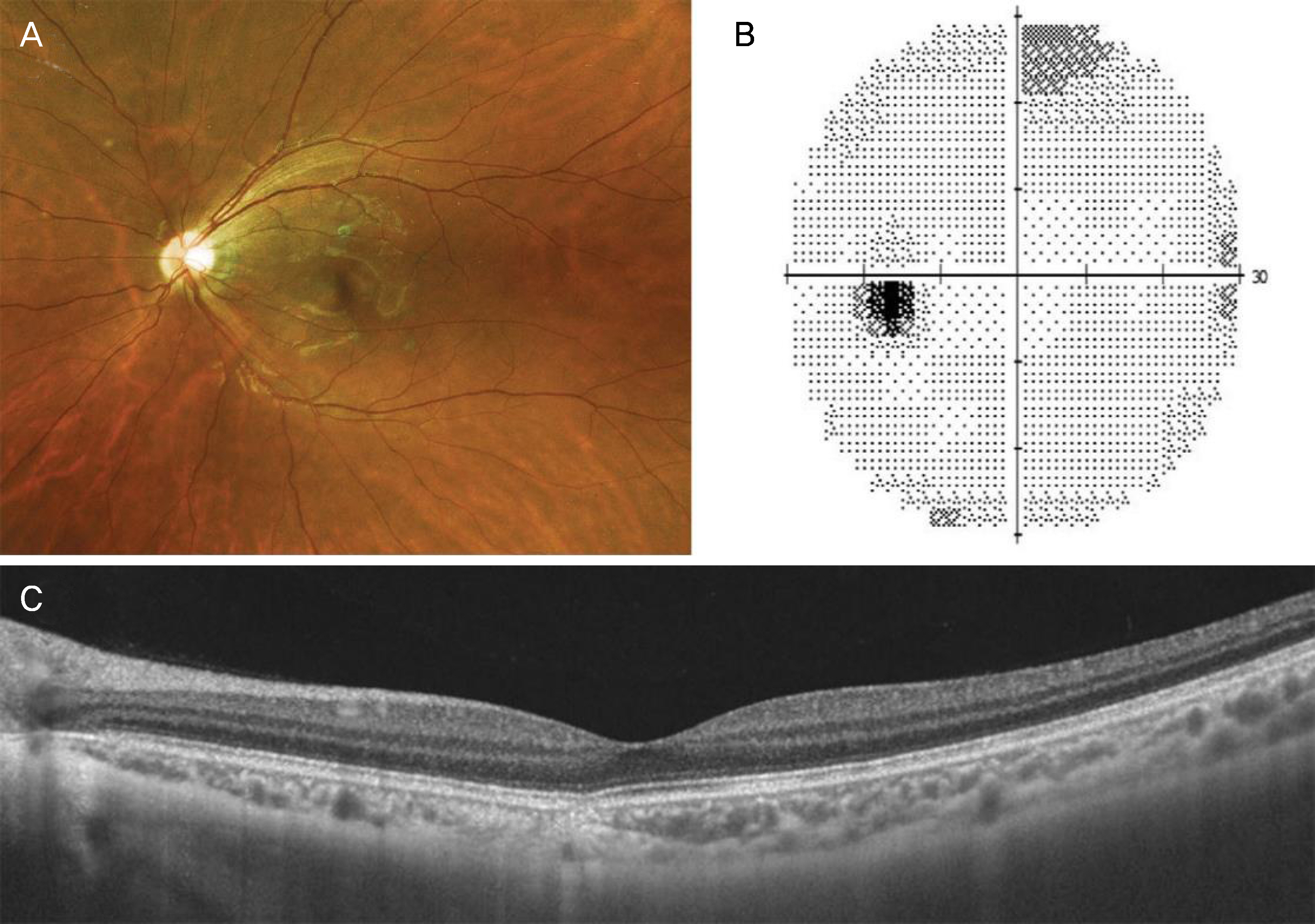J Korean Ophthalmol Soc.
2018 Sep;59(9):881-886. 10.3341/jkos.2018.59.9.881.
A Case of Punctate Inner Choroidopathy Followed by Multiple Evanescent White Dot Syndrome
- Affiliations
-
- 1Research Institute for Convergence of Biomedical Science and Technology, Department of Ophthalmology, Pusan National University Yangsan Hospital, Yangsan, Korea. isbyon@pusan.ac.kr
- 2Medical Research Institute, Department of Ophthalmology, Pusan National University Hospital, Busan, Korea.
- 3Department of Ophthalmology, Pusan National University School of Medicine, Yangsan, Korea.
- KMID: 2420339
- DOI: http://doi.org/10.3341/jkos.2018.59.9.881
Abstract
- PURPOSE
To report a delayed onset of multiple evanescent white dot syndrome in a patient with punctate inner choroidopathy.
CASE SUMMARY
A 23-year-old female complained about sudden visual loss in the right eye. Best-corrected visual acuity (BCVA) was 20/100 in the right eye and 20/20 in the left eye. In fundus examination and optical coherence tomographic images, subfoveal choroidal neovascularization (CNV) with hemorrhage was observed in the right eye, accompanied by multiple lesions of atrophic pigmentation on the posterior pole in both eyes. We diagnosed the patient as punctate inner choroidopathy (PIC) and CNV in the right eye, and treated her using three monthly intravitreal injections of bevacizumab (Avastin®, Roche, Basel, Switzerland; 1.25 mg/0.05 mL). The CNV regressed and the BCVA improved to 20/20. Two years later, she complained of visual impairment in her left eye. The BCVA was 20/40. Fundus photography revealed numerous small white dots around the posterior pole and optic disc. Disruption of the photoreceptor layer was seen in optical coherence tomography images. Small white dots were observed as multiple hyperfluorescent dots in fluorescein angiography and hypofluorescent spots in indocyanine green angiography. An enlarged blind spot was observed in the visual field. We diagnosed her as multiple evanescent white dot syndrome (MEWDS). One month after systemic steroid treatment, the multiple white dots disappeared and the BCVA improved to 20/20.
CONCLUSIONS
We determined that PIC and MEWDS, which belong to the white dot syndrome, could occur in a patient at different times.
MeSH Terms
Figure
Reference
-
References
1. Abu-Yaghi NE, Hartono SP, Hodge DO, et al. White dot abdominals: 20-year study of incidence, clinical features, and outcomes. Ocul Immunol Inflamm. 2011; 19:426–30.2. Gass JD. Are acute zonal occult outer retinopathy and the white spot syndromes (AZOOR complex) specific autoimmune disease? Am J Ophthalmol. 2003; 135:380–1.3. Jampol LM, Becker KG. White spot syndromes of the retina: a abdominal based on the common genetic hypothesis of auto-immune/inflammatory disease. Am J Ophthalmol. 2003; 135:376–9.4. Quillen DA, Davis JB, Gottlieb JL, et al. The white dot syndromes. Am J Ophthalmol. 2004; 137:538–50.
Article5. Amer R, Lois N. Punctate inner choroidopathy. Surv Ophthalmol. 2011; 56:36–53.
Article6. Watzke RC, Packer AJ, Folk JC, et al. Punctate inner choroidopathy. Am J Ophthalmol. 1984; 98:572–84.
Article7. Channa R, Ibrahim M, Sepah Y, et al. Characterization of macular lesions in punctate inner choroidopathy with spectral domain optical coherence tomography. J Ophthalmic Inflamm Infect. 2012; 2:113–20.
Article8. Turkcuoglu P, Chang PY, Rentiya ZS, et al. Mycophenolate mofetil and fundus autofluorescence in the management of recurrent abdominal inner choroidopathy. Ocul Immunol Inflamm. 2011; 19:286–92.9. Jampol LM, Sieving PA, Pugh D, et al. Multiple evanescent white dot syndrome. I. Clinical findings. Arch Ophthalmol. 1984; 102:671–4.10. Bryan RG, Freund KB, Yannuzzi LA, et al. Multiple evanescent white dot syndrome in patients with multifocal choroiditis. Retina. 2002; 22:317–22.
Article11. Heckenlively JR, Ferreyra HA. Autoimmune retinopathy: a review and summary. Semin Immunopathol. 2008; 30:127–34.
Article12. Pearlman RB, Golchet PR, Feldmann MG, et al. Increased abdominal of autoimmunity in patients with white spot syndromes and their family members. Arch Ophthalmol. 2009; 127:869–74.13. Fine L, Fine A, Cunningham ET Jr. Multiple evanescent white dot syndrome following hepatitis a vaccination. Arch Ophthalmol. 2001; 119:1856–8.14. Baglivo E, Safran AB, Bottuat FX. Multiple evanescent white dot abdominal after hepatitis B vaccine. Am J Ophthalmol. 1996; 122:431–2.15. Fine HF, Spaide RF, Ryan EH Jr, et al. Acute zonal occult outer abdominal in patients with multiple evanescent white dot syndrome. Arch Ophthalmol. 2009; 127:66–70.




